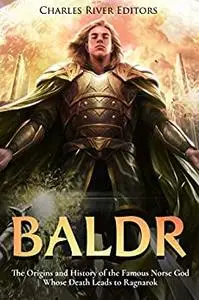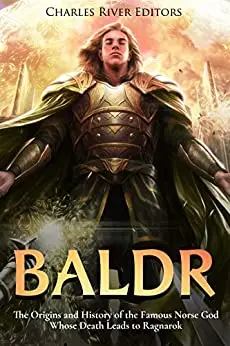Baldr: The Origins and History of the Famous Norse God Whose Death Leads to Ragnarok by Charles River Editors
English | December 21, 2017 | ISBN: N/A | ASIN: B078JXP9NS | 79 pages | EPUB | 1.01 Mb
English | December 21, 2017 | ISBN: N/A | ASIN: B078JXP9NS | 79 pages | EPUB | 1.01 Mb
*Includes pictures
*Includes medieval accounts
*Includes online resources and a bibliography for further reading
*Includes a table of contents
Much of what is known of the Norse myths comes from the 10th century onwards. Until this time and, indeed, for centuries afterwards, Norse culture (particularly that of Iceland, where the myths were eventually transcribed) was an oral culture. In fact, in all Scandinavian countries well into the thirteenth century laws were memorized by officials known as “Lawspeakers” who recited them at the “Thing.” The Thing was the legislative assembly in Scandinavia “held for judicial purposes.”
One of the most famous of these Lawspeakers was the Icelander Snorri Sturluson, a masterful writer who wrote the Prose Edda in the thirteenth century. There are other sources for the Norse myths, namely the later “Poetic Edda,” a collection of poems and prose work, and other sagas but the Snorri’s Prose Edda is the most complete work whose attribution is known to modern scholars.
It is believed that Snorri, a Christian, recorded these pagan beliefs so as to preserve and explain the stylistic poetry of Iceland, particularly the popular descriptive devices known as kennings. A kenning is made up of a base word and a modifying word that is used to describe a separate object. For example, “Gold” had a great many kennings, one of which was “Sif’s Hair.” If, however, the memory of Loki cutting off Sif’s hair and replacing it with gold were lost, then this kenning would make no sense to later readers. There are many of these allusions to the myths and it is thanks to them that the myths have survived.
The Norse Myths also appear to follow a chronological narrative, which the historian John Lindow describes as having a “Mythical Past, Present and Future.” Loki features in each of these literary “epochs” and it helps to understand the complexity of his character, as well as the belief system, to view the myths in this way.
One of the most influential and famous of the Norse Gods, Baldr “the Bright,” Odin’s second son, occupies a place in Norse mythology like no other. His fate was either that of the harbinger of doom or of salvation, depending on the interpretation of his myths. His story is one of the few that plays a pivotal role in the early days of the gods, as well as in their cataclysmic end – Ragnarök – and was even one of the very few to return to the light after the devastation. Baldr was not just a key figure in Norse mythology, however, features of his story – his apparent ‘resurrection’ being one – are central to some of the most pivotal myths to emerge from Indo-European traditions and they make for fascinating reading to anybody with an interest in the movement and development of Scandinavian culture as well as that of Christianity. Featuring miracles and magic, descents into the underworld and the destruction of the gods, Baldr’s story remains one of the most beloved in all world mythology.
Baldr: The Origins and History of the Famous Norse God Whose Death Leads to Ragnarok looks at the story and the legendary Norse deity. Along with pictures depicting important people, places, and events, you will learn about Baldr like never before.
Feel Free to contact me for book requests, informations or feedbacks.
Without You And Your Support We Can’t Continue
Thanks For Buying Premium From My Links For Support
Without You And Your Support We Can’t Continue
Thanks For Buying Premium From My Links For Support



